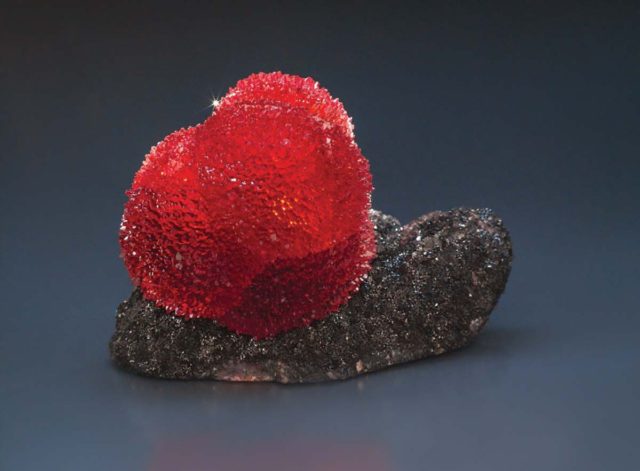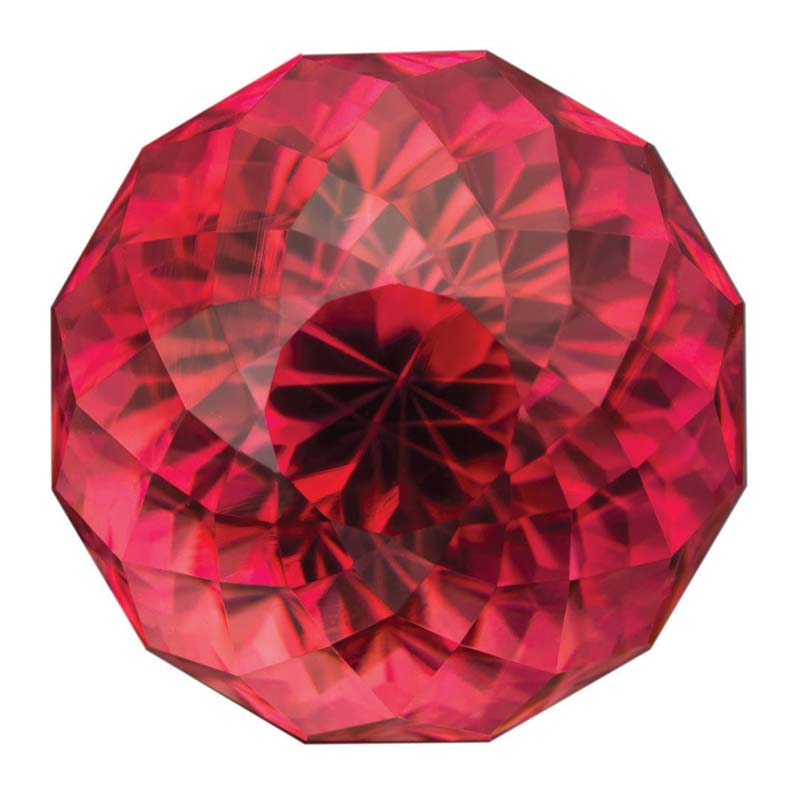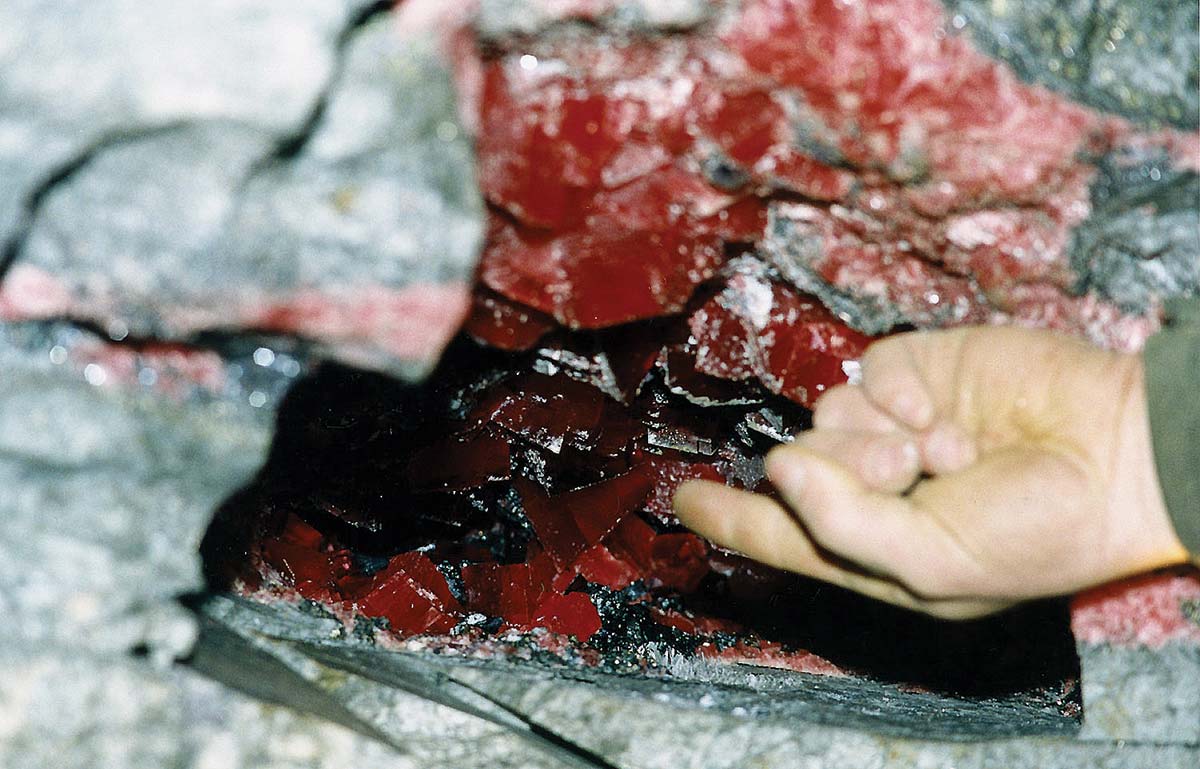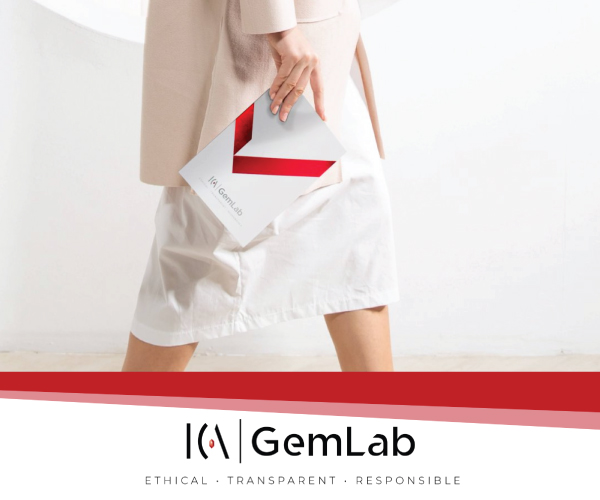
Estimated reading time: 8 minutes
The power of the color RED! Traditionally and since antiquity red stones such as garnets and rubies were thought to give protection, provide good health and have disease preventing properties. Red symbolized courage, love and especially passion. These three descriptions certainly apply to the most modern of gem species, rhodochrosite.
The stunning traffic-light red gem called rhodochrosite is a manganese carbonate renowned for its exceptional crystalline mineral specimens. Although it was often dubbed a collector’s stone—difficult to cut with its lower hardness of 3.5 to 4 on the Mohs scale and perfect cleavage—it has risen to prominence through the discoveries of both exceptional specimens and gem materials. The story of rhodochrosite has a human element in terms of friendship, endeavor, and the allure of discovery.

Although found in many localities, including Peru, Argentina, China and Brazil, it was the sporadic finds in Colorado (USA) at the beginning of the 20th century along with the incredible discovery in the 1970s at the N’Chwaning I Mine in Cape Province (South Africa) that put this mineral on the map. At N’Chwaning, miners sank a shaft through the largest known land-based manganese deposit consisting of coarse crystalline, massively textured black sooty recrystallized hematite and manganese oxide. It went through a zone of numerous pockets up to one meter across and lined with the most stunning crystals.
Miners scrambled for what they could collect, with reports of many specimens being destroyed or worked through. Now often cited as one of the greatest mineral discoveries of all time, this zone provided some of the world’s finest specimens of the species, including some beautiful gems cut from the material. Today, the rare surviving mineral specimens from this find are highly revered among collectors; the Snail owned by Bill Larson of Pala Gems International is regarded and celebrated as one of the finest mineral specimens ever discovered.
Interest was piqued, and collectors turned their attention to other localities. When we talk of rhodochrosite today, the words Sweet Home Mine immediately spring to mind; the name could not be more apt for those who have worked there. This old silver mine, discovered in 1873 at an incredible elevation of 3,444, lies at the base of Mount Bross (4,321m) in the Rocky Mountains. Old miners drove an 800 meter tunnel straight into the core of the mountain to intersect the silver vein system and, although this didn’t quite produce the silver bonanza anticipated, it was the sporadic remarkable finds of red rhodochrosite crystals that were both saved and sold to keep the mine open. The mine became famous among collectors with many specimens gracing museums and private collections worldwide.

In 1967, however, miners encountered a pocket that produced truly breathtaking examples. The best piece from this pocket was the Alma Queen, a 10cm on edge group of cherryred rhombohedral crystals that now takes pride of place at the Houston Museum of Natural Sciences. After this find, the Sweet Home Mine closed as a silver mine.
As mineral collecting gained huge momentum through the late 1970s – 1980s, the desire and demand for spectacular rhodochrosite specimens reached a new high. Bryan (President and Founder of Collector’s Edge) and Kathryn Lees of Golden, Colorado brought together a group of investors and friends and leased the mine in 1991, while Bryan purchased the mine in 1998.
In 1991, Sweet Home opened as a rhodochrosite mine in hopeful anticipation that dreams would be realized. During the following years, pockets of spectacular specimens were revealed as mining progressed, ultimately changing the face of the species and its use as a gemstone forever.

On 21 September 1992, the most incredible pocket of rhombohedral crystals was discovered. It measured some 4 x 3 feet, but only 2-6 inches wide. Some areas were completely covered with red crystals so breathtaking and valuable that it was aptly named the Good Luck Pocket. Over the years, other amazing pockets were encountered and given names such as Cash Flow, Good Luck, Millennium, Graham, Museum, Rainbow, etc. Even today, when talking to the lucky few who mined them, you can see and feel the passion, the delight of discovery and the emotions of such encounters. Specimens were striking. The richness of color and size were remarkable. The bright red crystals sparkled amidst the overall mining environmental grayness, and each pocket was unique with its own character.
From fragmentary material, a considerable amount of rough that could be faceted was available. Indeed, rhodochrosite from Sweet Home is remarkably pure MnCO₃, with little substitution of iron into its structure. Iron is a known culprit for diminishing the color, so the purity of rhodochrosite here gives the most vibrant color saturation. Alongside freedom from inclusions and excellent clarity, it results in producing remarkable specimens and material for gemstones up to great sizes for the species.
In the end, following extensive exploration, all target zones had been developed and in 2004, the mine was closed. Sealed, with dumps removed, the ground contoured and reseeded. But, as with many great adventures, work continued to better understand the nature of the porphyry intrusion hosting the deposit and how it controlled rhodochrosite deposition. Through years of continued sampling and geological study, it was determined that the zones of the 1990s continued upward through the mountain with a high probability of further pockets, accessible by putting in a tunnel 200 feet above the old Sweet Home portal.
Much work was undertaken in terms of contracts, permits, surveys, investors, and sourcing of equipment. Eventually, in the summer of 2016 with a rekindling of old friendships and the excitement of the previous years, a start was made on the new portal dubbed the Detroit City Portal of the Sweet Home Mine. This tunnel’s first target was to go 430 feet into Mt Bross and intersect the upward dip of the old Main Vein of the old Sweet Home Mine sitting below. This drive proved right on target, intersecting a point only seven feet from its planned target based on the earlier survey work.

By the end of 2018, another tunnel was created, left and right from the main, and upward workings were created called “raises” and “stopes.” As the workings expanded, several small pockets, including a spectacular one, were discovered in June 2020. Mining can often be a frustrating process with many variables and factors that may halt a mine’s progress. It was never anticipated that one of these variables would take the form of a global pandemic.
It has been a tumultuous year of upheaval. The Detroit City Project was fortunate to be able to operate in 2020. After three months of lockdown, mining operations continued using Covid safety protocols. It is a testament to their thoroughness that no one from the mine contracted Covid. But now, as we head into hopefully brighter days, the future looks exciting.
The hunt is on for the remarkable spectacular pockets like the Good Luck from the 1990s. Talking with Bryan Lees, his passion shines through, in that every day he and his team are fortunate to be able to dig for these remarkable crystal and gem treasures. Indeed, during the lockdown, the continuing work of the mine provided much hope, not only for those mining, but also for the many excited friends who reflected on their own thoughts related to the circumstances of the pandemic.
By July 2021, new tunnels have already reached areas intersected with diamond drilling and show signs of red. There are several more areas to explore in and around the main tunnel, providing hope and anticipation for years to come. Not only do we welcome the discovery of spectacular new specimens, but with new cutting techniques and growing artistic jewelry innovation, it’s an exciting time to see what endeavors will showcase rhodochrosite’s exceptional color properties. The rising popularity of this once collector’s gemstone is assured. Red’s alliance with vigor, courage and life itself has never been more important than now.













